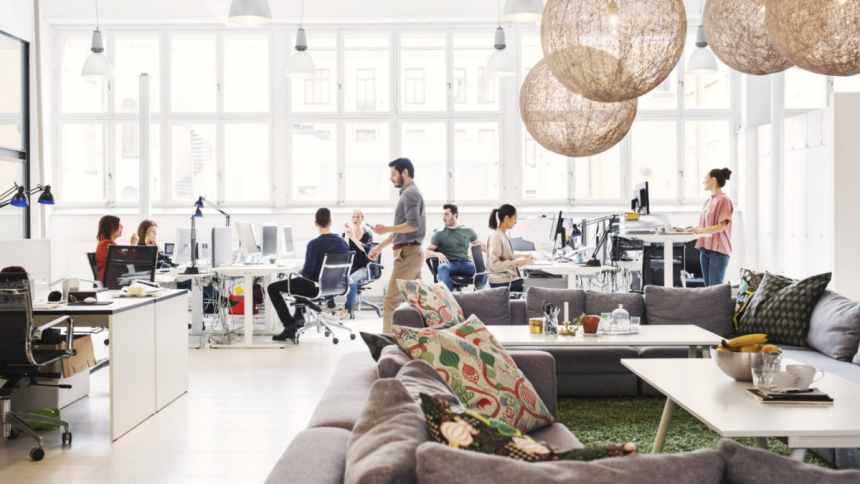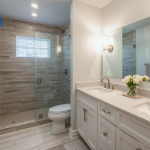Back when you were a kid, there probably wasn’t much distinction between life and play. Sure, some moments were more boring than others, particularly when adults were talking to each other. But your child’s mind would soon create fanciful stories and games the moment boredom crept in. Woven into the fabric of nearly every minute and interaction, life was play.
Adult life isn’t the same. Play is discreet, often rule-oriented, valued lower than, and fundamentally separate from work and other responsibilities. However, for many, a life without fun is an unhappy one. And the happier people are, the better they tend to work and the more productive they tend to be.
So if you’re interested in improving the productivity of your employees, consider why happy, playful environments might be the key.
Environmental Design Matters
The way people build their environment affects what they do in them. Take this into consideration when designing your own workspaces. Think: when did you last see a school without playground equipment? Maybe never, right? Schools have playgrounds for many reasons, one of which is that “kids should play every day” is a value society holds.
Unfortunately, it’s not one that’s shared with adults in mind. Yet studies show that play “positively relates to employees’ daily work engagement through basic psychological need satisfaction.” In short, the better people feel, the better they tend to work. So why do so many offices neglect to incorporate playful spaces into their design?
You might think that making time and space for play will detract from working hours, costing you success in the long run. Well, would you say Google and its parent company Alphabet are successful businesses? Because this $1.88 trillion-dollar company makes designing fun, colorful, and interactive spaces for its employees a top priority. Alphabet knows that they’ll see their investments in Googlers’ well-being return in their bottom line. Consider this as you design your workspaces for your employees.
Playful Spaces are Shared Spaces
One of the greatest downsides of cubicles is the isolation they impose on workers. Even open-air offices focus attention on individual seats and computer screens. Beyond fluorescent-lit kitchenettes, most modern offices lack sufficient shared spaces. Playful environments flip this pattern on its head.
Playful environments make space for common seating, game rooms, and other third spaces. This, again, is something Alphabet and Google take full advantage of. They know that playful environments encourage social interaction and collaboration among employees. This in turn increases the sense of community and social wellbeing within the office. Employees who share third spaces feel like they’re truly on the same team, working together toward a common goal.
The end result is that playful shared spaces boost employee morale. When times do inevitably get tough in the business world, your employees will be more likely to weather the storm. So not only can playful shared environments give short-term productivity benefits. They can also help your team and your business go the distance in the long run.
Playful Environments Encourage Creativity
Many leaders believe it’s their job and theirs alone to steer the ship of business. And while leaders do have the final say in decision-making, great leaders don’t make these decisions alone. They listen to and trust their employees because they know hearing a variety of perspectives leads to the most beneficial decision.
If employee input can improve leadership’s decision-making then improving the quality of employee thinking can improve the quality of those decisions even further. Playful environments foster creativity and divergent thinking, which are both essential for problem-solving. This is because having fun and engaging in play help you explore unconventional ideas and solutions. It breaks traditional thinking patterns that may limit perspectives and decision-making.
Thinking outside of the box is a great way to encourage imagination, one of the most important parts of growing a business. An active, yet grounded, imagination can see possibilities where nothing yet exists. The more you can encourage active imagination in your employees, the better they’ll be able to generate unique and creative solutions. This is just another way that designing fun, playful environments will give your business long-term benefits.
Get Designing
You may now be wondering how you can design your workspace to be more fun and inviting. Thankfully, it can be rather simple and doesn’t have to necessarily be expensive. All it takes is a bit of creativity.
You can start by designating a particular room or area as a flexible free space that employees can use as they so desire. Use plenty of color and playful decor to inspire flights of mind. Encourage spontaneous interactions in this space by having plenty of seating and whiteboards to draw on. Or have board games, books, ping pong tables, or gaming consoles at the ready.
Take your space in another direction by designing it to soothe and relax. Incorporate elements like plants, soft colors, and plenty of natural light. Let beanbag chairs and pillows dot the floor, with yoga mats waiting at the entrance. Talk to your employees — ask about what they would enjoy for fun. Then synthesize these ideas into a playful environmental design that encourages everyone to get the most out of work and life.
Lynn Martelli is an editor at Readability. She received her MFA in Creative Writing from Antioch University and has worked as an editor for over 10 years. Lynn has edited a wide variety of books, including fiction, non-fiction, memoirs, and more. In her free time, Lynn enjoys reading, writing, and spending time with her family and friends.















